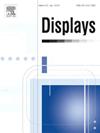A medical image segmentation method based on adaptive graph sparse algorithm under contrastive learning framework
IF 3.7
2区 工程技术
Q1 COMPUTER SCIENCE, HARDWARE & ARCHITECTURE
引用次数: 0
Abstract
Background
Existing U-shaped models have shown significant potential in medical image segmentation. However, their performance is limited due to the constrained receptive field and lack of global reasoning capability in standard U-shaped structures. This paper aims to develop a module for U-shaped structures to enhance feature discrimination and improve segmentation accuracy.
Methods
This paper proposes a medical image segmentation network based on the U-shaped structure under the contrastive learning framework to achieve accurate segmentation of medical lesion areas. Initially, feature maps are extracted using the encoder of the U-shaped structure and mapped into a two-dimensional graph structure. We then propose a Sparse Dual Graph Mapping (SDGM) method to adaptively sparsify the graph structure, creating multiple sparse graph structures with different node attributes and topologies. Node-level and graph-level contrastive learning are defined using different judgments of positive and negative samples within the graph. Finally, supervised and unsupervised losses are aggregated to enhance the model’s discrimination ability, resulting in the final segmentation mask.
Main Results
Experimental results demonstrate that the proposed SGC module is applicable to various U-shaped networks and outperforms existing techniques on multiple datasets. It achieved 94.02% Dice on the honeycomb lung dataset, 91.78% Dice on the ACDC dataset, and 92.43% Dice on the polyp dataset, all showing state-of-the-art performance.
Significance
The proposed Sparse Graph Contrastive (SGC) module can be applied to any U-shaped structure to enhance its performance. This method maintains high correlation and consistency between automatic segmentation results and expert manual segmentation results. It significantly improves the segmentation performance of lesion areas in medical images, assisting doctors in early screening, accurate diagnosis, and adaptive treatment, with important clinical relevance in medical imaging-assisted diagnosis.
对比学习框架下基于自适应图稀疏算法的医学图像分割方法
现有的u型模型在医学图像分割中显示出巨大的潜力。然而,在标准的u型结构中,由于接受域的限制和缺乏全局推理能力,它们的性能受到限制。本文旨在开发一个u型结构的特征识别模块,以增强特征识别能力,提高分割精度。方法提出一种基于对比学习框架下u型结构的医学图像分割网络,实现医学病灶区域的准确分割。首先,使用u型结构的编码器提取特征映射,并将其映射为二维图结构。然后,我们提出了一种稀疏对偶图映射(SDGM)方法来自适应稀疏化图结构,创建具有不同节点属性和拓扑结构的多个稀疏图结构。节点级和图级对比学习是通过对图内正样本和负样本的不同判断来定义的。最后,将有监督损失和无监督损失进行汇总,增强模型的判别能力,得到最终的分割掩码。实验结果表明,提出的SGC模块适用于各种u型网络,并且在多数据集上优于现有技术。它在蜂窝肺数据集上实现了94.02%的Dice,在ACDC数据集上实现了91.78%的Dice,在息肉数据集上实现了92.43%的Dice,都显示出了最先进的性能。意义提出的稀疏图对比(SGC)模块可以应用于任何u型结构,以提高其性能。该方法在自动分割结果和专家人工分割结果之间保持了高度的相关性和一致性。它显著提高了医学图像中病变区域的分割性能,有助于医生早期筛查、准确诊断和适应治疗,在医学影像辅助诊断中具有重要的临床意义。
本文章由计算机程序翻译,如有差异,请以英文原文为准。
求助全文
约1分钟内获得全文
求助全文
来源期刊

Displays
工程技术-工程:电子与电气
CiteScore
4.60
自引率
25.60%
发文量
138
审稿时长
92 days
期刊介绍:
Displays is the international journal covering the research and development of display technology, its effective presentation and perception of information, and applications and systems including display-human interface.
Technical papers on practical developments in Displays technology provide an effective channel to promote greater understanding and cross-fertilization across the diverse disciplines of the Displays community. Original research papers solving ergonomics issues at the display-human interface advance effective presentation of information. Tutorial papers covering fundamentals intended for display technologies and human factor engineers new to the field will also occasionally featured.
 求助内容:
求助内容: 应助结果提醒方式:
应助结果提醒方式:


